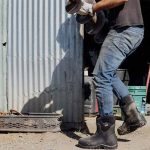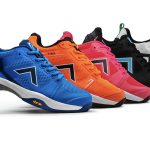Huffy Corporation, on the other hand, is looking to its Service group as a profit center and will make the move this year to consolidate all brand operations under one Sporting Goods division, leaving the company with just two divisions. The company said Huffy was traditionally been “organized along product lines”, but they are now convinced that “this structure has lead to duplication of effort”. The restructuring is estimated to cut operating costs by $7 million to $9 million a year.
The move, which will result in a Sports Goods unit and a Services-to-Retail unit, is expected to “significantly reduce the current Gen-X operation in Canada” and move most operations to Dayton, OH. The changes are expected to reduce the current workforce, primarily at Gen-X, by 20%, or 100 people. The administrative offices for Gen-X in Toronto, and Huffy Sports in Sussex, WI, will be closed. A basketball backboard manufacturing plant in Sussex that employs about 200 will continue operations.
There was no indication where the grey market “opportunity” business will reside, but Huffy said it will maintain a “limited presence” in Canada.
Huffy bought Gen-X in September 2002 for $19 million and 5 million Huffy shares. Gen-X was expected to reach $150 million in sales that year.
The consolidation action comes on the heels of a fourth quarter that saw the companys net loss jump 181% to $11.8 million, or 74 cents per common share, on sales of $121.0 million in Q4, versus a loss of $4.2 million, or 29 cents per common share, on sales of $123.0 million in the year-ago period, or a decline of about 2.0%. It was even worse when looking at the ongoing business when the $10.7 million loss from continuing operations is compared to a small profit of $800,000 from those same operations in Q4 2002.
The discontinued operation reflects the operating losses for both years and the disposal this year of the Volant Ski business, which was sold to Amer Groups Atomic division in December 2003. Gross margins for the quarter shrunk 570 basis points to 11.0% of sales versus 16.7% for the same period LY.
Stepping into the flame, newly-minted company president and CEO Paul R. D'Aloia stated the obvious that “the net loss for the quarter and the year are unacceptable”, although he did point out that Q4 sales “came in within the range we anticipated”.
The Service business generated EBIT of $3.7 million in 2003 versus a loss in 2002 and saw revenues increase 4.1% for the year.
In Sporting Goods, the bright spot appeared to be the snowboard and golf segment in the sales arena, while the bicycle, snowboard and golf product lines “all finished the year with solid earnings”. The problem areas still continue to be in basketball backboards, in-line skates, and action sports product lines, which each saw “significant declines in both sales and margins” compared to last year. SG&A expenses were also described as “well above acceptable levels”, or up 210 basis points, primarily at Gen-X.
DAloia also said that sales and margins “were affected by retailers emphasizing, and consumers buying, lower price-point products during the holiday season”. But one of the other painful experiences has been the loss of the basketball backboard business at TSA as the now-national retailer starts to cut back vendors through their bid process.
Although the company also indicated that there was a “limited” impact to margins from the “opportunity” business due to lower price points and less available inventory, DAloia said that they had “an acceptable” Q4 and are going to have “a decent first quarter”.
HUF now estimates full year 2004 earnings per common share in the 22 cents to 27 cents range on sales of $450 million to $460 million.
>>> Curious to use Service as a profit center instead of servicing the brands. Also curious the company doesnt highlight brands in its report















